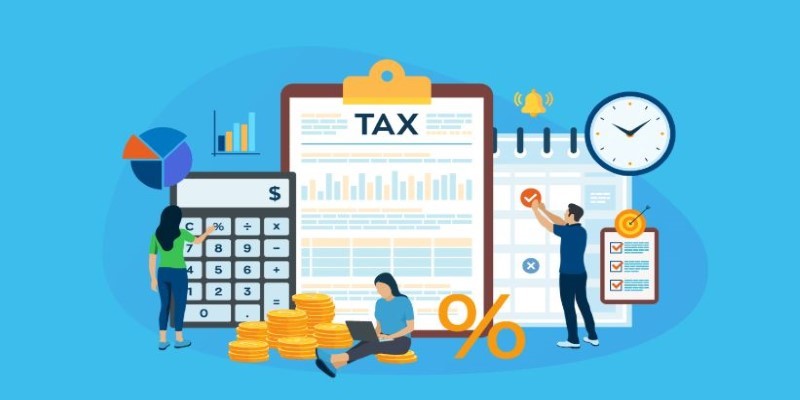A Guide to Building Mutual Fund Portfolios for Retirement
Planning for retirement might appear overwhelming, particularly when confronted with a variety of investment alternatives. Mutual funds emerge as an easy and efficient method to create a portfolio that combines income growth for your post-work years. Grouping investments into diversified funds makes the procedure simpler and lessens the risks tied to singular investments. This article will look into the role of mutual funds in planning for retirement. We will discuss its advantages, various categories, and tactics to develop a safe and comprehensive investment portfolio.
The Role of Mutual Funds in Retirement Planning
Mutual funds are one of the most flexible and suitable choices for retirement planning. They gather money from many investors to put into a variety of securities like stocks, bonds, and cash market tools. This spread reduces the chance of big losses while also allowing possibilities for consistent growth. For people who have retired, mutual funds can act as the base for a portfolio that is designed to fulfill income necessities and at the same time safeguard money resources. Putting together different types of equity funds which are meant for growth and bond funds intended for stability, you get an opportunity to shape a balanced plan capable of adjusting according to fluctuating financial needs over periods.

Advantages of Using Mutual Funds for Retirement
One major benefit of mutual funds is they have expert management. Managers who are skilled in understanding market movements and choosing securities supervise the investments, making smart choices to increase returns.
This removes the requirement for retired people to look after their portfolios actively, which lowers stress and saves time. One big advantage is the ability to sell mutual funds fast when there are urgent money needs. Also, these funds can be found in many forms that suit different levels of risk and retirement plans. Whether your main concern is high profits, regular income, or small changes in value over time, mutual funds provide a custom answer.
Understanding Portfolio Diversification with Mutual Funds
For reducing risk in a retirement portfolio, diversification is very important and mutual funds are good at this. They spread investments over many asset types and sectors which helps lessen the effect of market drops on your savings.
As an example, a person retired might mix equity funds for growth over the long term with bond funds to secure a regular income. Furthermore, global funds can offer a view to worldwide markets, improving profits while diversifying the portfolio even more. This steady method aids in protecting against unforeseen economic changes, making sure of regular performance over time.
Types of Mutual Funds for Retirement Portfolios
Equity mutual funds are perfect for people who have retired and want their capital to grow. These types of funds put money in various stocks, which can lead to significant growth over a long period. Index funds that follow market standards such as the S&P 500, are regularly selected due to their less expensive fees and stable profits.
However, bond funds are very important for retired people who place a high value on steady income and stability. These types of funds invest in securities that provide fixed income and offer consistent interest payments with barely any risk involved. Money market funds, recognized for their easy access to cash (liquidity) and reduced risk levels, could act as financial safety nets during unexpected costs which makes them an essential part of planning finances after retirement.
Balancing Risk and Return in Retirement Investments

When you are nearing retirement, it becomes very important to find a perfect balance between risk and return. Younger people tend to focus on equity funds that come with high risks but also the potential for big rewards to achieve maximum growth. However, when people retire they usually move towards options that have more stability.
For instance, changing from aggressive growth funds to bond funds which concentrate on income can guard your saved money against irregularities in the market. Target-date funds are also a good choice, they change their asset allocation to be more careful as you approach retirement time. This way of not needing much management matches with changing financial needs and gives comfort while dealing with the end periods of life
Tax Efficiency in Mutual Fund Investments
Mutual funds too provide chances for effective planning of retirement taxes. Tax-delayed accounts, like normal IRAs and 401(k) plans, let investments expand without quick tax effects. For instance, capital benefits and dividends from mutual funds in these accounts are not taxed until you make withdrawals.
Roth accounts improve this advantage by giving tax-free withdrawals when you retire, but only if contributions satisfy certain conditions. On the other hand, taxable accounts need a thoughtful choice of tax-efficient mutual funds, like index funds; these create smaller taxable distributions. A good blend of these account varieties can increase the worth of your retirement savings greatly.
Rebalancing and Monitoring Your Retirement Portfolio
To keep a portfolio of mutual funds for retirement in good condition, you must continually balance it to make sure it matches your objectives. As time passes, changes in the market may lead to variations in the equity, bond, and money market funds proportions within your portfolio which might stray from what you initially wanted.
By rebalancing or adjusting these ratios now and then can control risks while keeping the portfolio consistent with financial tactics planned by yourself. Also, checking how well it works and changing funds that don't perform as expected with better options ensures more growth and income continues. For instance, if a fund of bonds doesnt provide the returns we anticipated, shifting to an option with a higher yield can improve the efficiency of the total portfolio.
Real-Life Application of Mutual Funds in Retirement
Think about an investor who is 60 years old and moving into retirement. They put 40% of their investment portfolio in shares funds, half in bonds funds, and the rest, which is a tenth, to money market funds for balancing growth with earning. This approach will make regular income because of bond interest while there's also a possibility for expansion from share equities.
Another person who has retired could find target-date funds more straightforward. If they put their money into a 2030 target-date fund, they will gain from automatic changes that move from stocks to bonds as retirement comes closer. This provides them with an easy financial switch without continuous supervision.
Conclusion
Mutual funds provide a straightforward, efficient way to construct a solid retirement portfolio. Their expert handling, assortment, and flexibility render them an excellent option for retirees who want to maintain an equilibrium between growth, income, and risk. Normal adjustments and focus on tax productivity boost the worth of these investments, guaranteeing a secure retirement without stress. If mutual funds are made a key point in your plan, reaching your goals for retirement becomes an achievable and practical objective.












